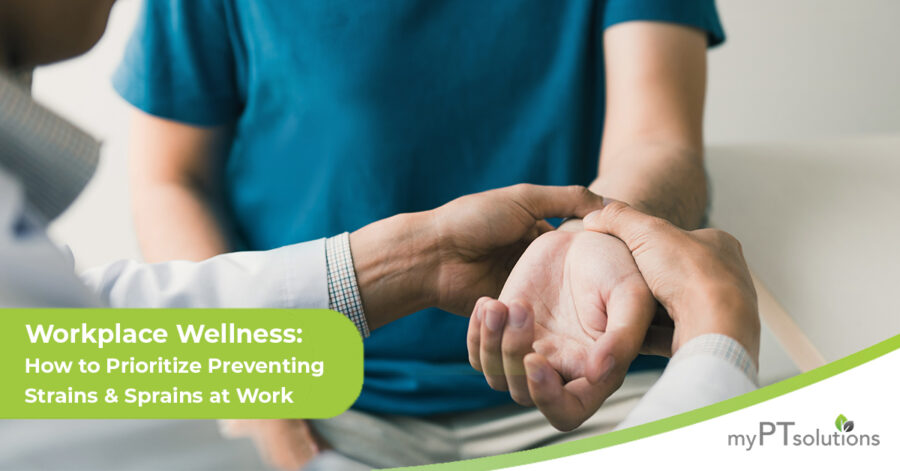Improper lifting, pushing, pulling, overreaching, and any work that requires an employee to sit or stand in an awkward position for long periods can place excess stress and strain on the body. Sprains and strains typically affect the back, arms, ankles, and shoulders. Sprains and strains are leading causes of injury in the workplace. These injuries are common, and they are also costly. However, these injuries are also preventable, and you can take proactive steps to identify risks and reduce the occurrence of these injuries.
Sprains and Strains
There are two general categories of risk factors in the workplace: ergonomic
(workplace-related), and individual risk factors. The ergonomic risk factors include:
- Excessive force
- Excessive repetition
- Awkward posture
- Environmental factors
The individual risk factors that contribute to workplace sprains and strains include:
- Poor work practices
- Poor overall health habits
- Inadequate rest and recovery
- Poor nutrition and hydration
- Failure to recognize early signs and symptoms
Preventing Sprains and Strains in the Workplace
Sprains and strains are painful and often preventable. Prevention is always the best option. Indeed, better than treatment. A proactive approach is needed. You need a proactive process in place that will systematically identify and remove the risk factors that are present in your workplace. Your organization can do this using controls.
Ergonomic controls reduce and remove ergonomic risk factors. These controls eliminate or reduce awkward postures with ergonomic modifications. These controls seek to maintain a joint range of motion to accomplish work tasks within the mid-range of motion positions. Ergonomic tools allow workers to maintain optimal joint positions. Ergonomic controls include work practice controls, job rotation, and counteractive stretch breaks.
Individual controls include education and training. Training all team members on all aspects of human performance, such as ergonomics, MSD prevention principles, and personal health and wellness, is vital. Back your message up with formal classroom training and one-on-one follow-up. Remember that early warning signs of future injuries are in your clinic today. It is crucial to have a proactive strategy to discover these early warning signs and prevent them from becoming injuries. One-on-one consultations with individual workers might be your last line of defense between risk factors and injury.
Identify and Control
It is part of your responsibility to your company and employees to provide a safe workplace for your team. Your crew is responsible for keeping their bodies fit and using proper work practices. Create a company culture of safety, health, and wellness. Make it a partnership for prevention between the company and the individual workers. Provide a work setting with a systematic ergonomics improvement process while your team is responsible for keeping fit for their work.
Partner with myPTsolutions to find your next therapist!

